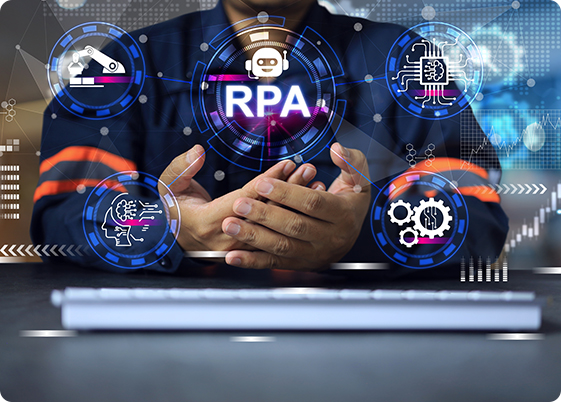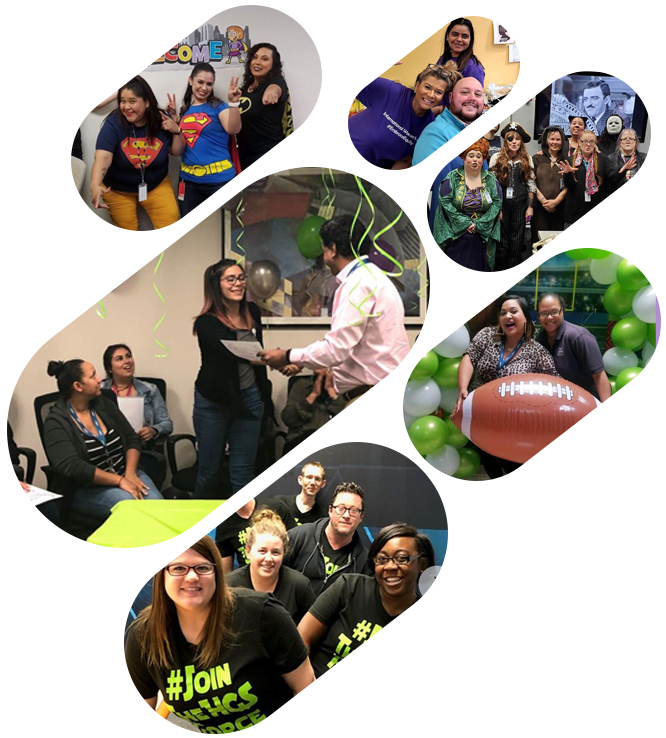
An RPA developer is an individual who builds, designs, and maintains automation solutions using RPA tools to support automated workflows that can save businesses resources, time, and money. Landing your first job as an RPA Developer can be overwhelming, but if you employ a proper strategy, then it is easily achievable. To master this field, you need to work on the combination of technical skills, certifications, and real-world projects.
With this blog, we will guide you through the key RPA developer skills, certifications, and tactics, providing a clear understanding of how to become an RPA developer and establish a successful career in this field.
Why RPA Development is a Hot Career
As the technology is evolving, the need for automation is also increasing. For this, the implementation of Robotic Process Automation (RPA) is transforming how organizations handle repetitive and rule-based tasks. Adopting automated workflows enables companies to save time, minimize expenses, and increase accuracy. Today, the need for RPA developers is growing exponentially.
If you want to know more about how to become an RPA developer, now is the best time to research and start. With the right skills, certifications, and strategies, you can easily secure exciting opportunities in automation work as an RPA developer.
The RPA career market is particularly lucrative for students and new graduates. Freshers can easily delve into this fulfilling career path with proper preparations. This blog provides a step-by-step RPA career guide to make you a favorite candidate and land your first job in this new field.

How to become an RPA Developer: A Step-by-Step Guide
Robotic Process Automation (RPA) is transforming how businesses handle repetitive tasks by using software bots to improve efficiency and reduce costs. As adoption grows, the role of an RPA developer has become one of the most sought-after IT careers.
An RPA developer designs automation workflows, builds bots, and collaborates with business teams to streamline operations. To succeed, you’ll need both technical expertise and problem-solving skills.
This step-by-step guide will walk you through the roadmap to becoming an RPA developer—from learning essential skills and tools to earning certifications, building projects, and landing your first job.
Step 1: Let’s Understand the Work of an RPA Developer
The first step is to understand the work profile/work objectives before embarking on an RPA developer career. It is essential to understand the job requirements and what is actually involved.
Evaluating business processes
First and foremost, the step is to identify the processes that are repetitive and can be automated.
Creating efficient workflows
Creating a detailed strategy of the workflows to ensure that the automation runs smoothly.
Designing and testing automation bots
It is one of the crucial steps; here, you implement RPA tools to build, test, and refine bots.
Deploying automation solutions
Ensuring bots operate smoothly in real-time settings.
Partnering with Business Analysts
You also need to collaborate with the teams to ensure automation aims to meet business requirements and goals.
Knowing these RPA developer roles and responsibilities will assist you in preparing for the skills and knowledge needed.
Step 2: Develop the acquired Skills to become an Expert RPA
You'll need to acquire a blend of technical and interpersonal skills.

Master the Automation Tools & Platforms
Practise on commercial-grade platforms that are implemented in actual projects using tools such as UiPath, Automation Anywhere, and Blue Prism.
Programming Fundamentals
Although RPA is typically low-code, understanding programming languages such as Python, C#, or Java can be advantageous.
Process Mapping & Business Analysis
Learn how to map workflows and process analysis for automation potential.
Databases & APIs
RPA typically interfaces with databases and APIs, so it is essential to be familiar with SQL and RESTful APIs.
Soft Skills
Communication, collaboration, and problem-solving are as crucial for success. These are the major RPA developer skills that employers require in a candidate.
Step 3: Get Certified
One of the best ways to prove your capability is by RPA developer certification. UiPath, Automation Anywhere, or Blue Prism certifications validate your capability and make your resume stand out. To stand out in the interview process, consider completing these certifications, as many companies shortlist candidates based on them.
Step 4: Create a Skill-based Real-World Project Portfolio
Having practical experience with the tools and building a practical portfolio shoots up your profile more; it helps employers to filter out the right candidate. Working on projects like automating invoice processing or email responses gives your profile an edge.
A portfolio with real-world projects demonstrates your abilities better than words on a resume.
Step 5: Build Relationships, Network, and Join Professional Communities
Networking is increasingly important in every profession, whether through joining communities, LinkedIn groups, attending webinars, or participating in RPA forums. Collaborating and working with professionals keeps you up to date with trends, ideas, and possibly employment opportunities. Nowadays, people find new jobs through referrals or by networking in these communities.
Step 6: Build an Impactful Resume and Showcase Your Skills on Your LinkedIn Profile
In your resume, you must showcase your certifications, technical skills, and real hands-on experience on technical projects. Any RPA developer's resume should include bullet points to highlight measurable achievements, such as "automated three processes that saved 50 hours per month.
Your LinkedIn profile should be updated with relevant terms such as RPA developer skills, and you should collaborate with employers who specialise in automation positions.
Step 7: Master the Interviews
Work on real-life problems encountered in RPA projects. Make yourself familiar with RPA developer interview questions to boost your confidence. Work on the technical and situation-based questions, like how to deal with process exceptions or how to improve a bot's performance. Practising the Mock interviews will prove really helpful and build confidence.
Step 8: Apply Strategically
Instead of applying everywhere, target companies and roles that match your skill set. Browse opportunities in IT jobs in the USA and other automation-related positions. Tailor your resume to each role by aligning it with the job description.
Step 9: Keep Learning & Growing
The automation industry evolves rapidly. Stay updated with new tools, AI integration, and advanced analytics. Reading resources like Understanding RPA Job will help you stay informed and ahead in your RPA developer career.
Conclusion
If you’ve been wondering how to start an RPA career, becoming an RPA developer may seem challenging at first, but with the proper roadmap, it’s absolutely achievable. By mastering RPA developer skills, earning certifications, and building a strong portfolio, you’ll position yourself as a competitive candidate in this high-demand field. Follow this step-by-step RPA career guide to land your first job and unlock exciting growth opportunities in automation.
Follow this step-by-step RPA career guide to land your first job and unlock exciting growth opportunities in automation. Companies like HGS USA continue to create promising opportunities for aspiring RPA professionals in North America.
For more career inspiration, check out In-Demand Tech Jobs shaping the future of IT. The time to start your journey is now.
FAQs
What are the common challenges in cloud contact centre implementation?
Businesses may face challenges like data migration, employee resistance to change, integration with legacy systems, and ensuring compliance with data protection laws.
What common mistakes should I avoid as a beginner RPA developer?
Avoid skipping fundamentals, neglecting documentation, or overcomplicating workflows. Focus on building a solid foundation.
Which industries have the highest demand for RPA developers?
Banking, healthcare, insurance, retail, and telecom are leading adopters of RPA technology.
What are the most common challenges in RPA deployment?
Challenges include resistance to change, process complexity, and scalability issues. Overcoming them requires precise planning and the buy-in of key stakeholders.
What are the top KPIs or metrics used in RPA projects?
Key metrics include process completion time, error rates, cost savings, and return on investment (ROI).
 US
US Canada
Canada Colombia
Colombia India
India Jamaica
Jamaica Philippines
Philippines UK
UK SA
SA
